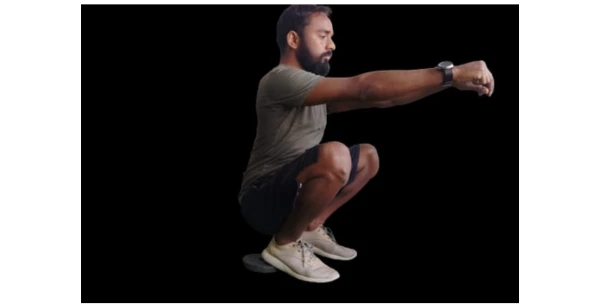Why You’re Not Seeing Results – Even with the ‘Perfect’ Workout Routine
What World’s No.1 Rehab Coach Recommends for Fat Loss: Yoga, Cardio or Weights?
What is happening? You’re training but not losing fat? Why?
Because fat loss depends on more than just exercise: it’s about hormonal balance, metabolism, sleep, stress, and nutrient timing.
For instance, doing long cardio may burn calories but simultaneously elevate cortisol, which can hold onto belly fat, especially without proper recovery.
How it plays out:
Imagine two people both walking briskly for 45 minutes daily.
- One also focuses on good sleep, balanced macros, stress reduction, and progressive strength work — she loses fat steadily.
- The other doesn’t — she stalls within weeks.
✅ The key is alignment — exercise must be part of a complete lifestyle stack (sleep, gut health, hormones, nutrition).
Which Style of Training Works Best for Fat Loss and Why
Yoga
What:
Primarily low‑impact stretching and breath work.
Why:
- It improves resting metabolic rate (RMR) and stress hormones
- Studies show higher adiponectin (anti-inflammatory) and preserved HDL levels compared to diet-only groups
- Helps indirectly improve metabolism (PMC)
📌 A study comparing yoga + mild calorie restriction vs strict diet found yoga helped maintain metabolism and improve mood faster, though weight loss was modest.
Example:
A stressed professional adding daily 20 min morning yoga saw her RMR improve, leading to better fat-burning ability over time even though she burned fewer calories in-class than in cardio sessions.
Cardio / HIIT
What:
Moderate‑intensity steady-state cardio or high-intensity interval training.
Why:
- HIIT triggers anaerobic energy systems and post‑exercise oxygen consumption
- Improves VO₂max and fat oxidation
- More time-efficient than moderate cardio
- Reduces abdominal and visceral fat (Wikipedia)
How:
Example:
4×4 min intervals at 85–95% HRmax over 7–8 weeks improved fat-burning capacity.
Example:
A client swapped 30-minute steady treadmill runs for 20 min HIIT bursts a few times a week — she lost more belly fat and improved stamina, in less time.
Weight / Strength Training
What:
Resistance training using weights or bodyweight.
Why:
- Builds lean muscle, which increases resting metabolic rate
- Improves insulin sensitivity, reduces fat mass, supports body recomposition
(Precision Nutrition, Women’s Health, Wikipedia)
📊 A landmark study:
- Aerobic-only: lost ~1.66 kg fat
- Resistance-only: lost ~0.26 kg fat but gained lean mass
- Combined: lost ~2.44 kg fat — best total body composition change
Example:
A working mom added 3 days/week of compound strength moves (squats, pushups).
She didn’t lose much scale weight initially, but after 8 weeks, her silhouette leaned out, her waist flattened, and clothes fit better.
Functional Training
What:
Multi‑joint, real‑life movement patterns (e.g. squats, lunges, crawling, kettlebells) often done in circuits.
Why:
- Improves strength, power, agility, endurance
- Body composition shifts depend on overall diet and lifestyle
- Trials showed –3.4% fat mass, –7.7% android FM in post-menopausal women, improved coordination and cholesterol
(Tom’s Guide, Wikipedia, Reddit, PubMed, PMC)
How:
12-week trial of high-intensity functional training:
- Lowered fat mass by ~3 kg
- Increased lean mass and strength
Example:
A client who hated machines did band/resistance + bodyweight circuit 3×/week and brisk walking. After 4 months:
- 4% drop in body fat
- Better movement
- Reduced waist
— all without traditional gym isolation exercises.

(Why, How, Example) The Best Strategy
What:
A combination of training styles, prioritized smart sequencing, hormonal balance, and progressive tracking.
Why:
- Combination plans outperform single-mode training
- Weight training builds muscle and improves insulin sensitivity
- Cardio/HIIT burns visceral fat
- Yoga supports stress/hormonal balance
- Functional training improves movement and sustainability
(Precision Nutrition, PMC)
How to Combine Them:
- Assess baseline body comp, hormones (e.g. cortisol, thyroid)
- Start with yoga/mobility (3–4 sessions/week) to improve recovery, reduce stress, and boost RMR
- Add HIIT/cardio (2–3 times/week) for abdominal fat loss
- Strength/functional training (2–3 times/week), with compound moves
- Integrate nutrition and gut support, aim for mild caloric deficit, protein focus, and stress management (sleep, breathing)
- Track progress with more than just the scale:
- Waist size, lean mass, energy, sleep, hormone levels
Example:
Client “Riya” had stalled fat loss despite cardio and yoga.
We reassessed and added:
- Two strength circuits (bands + bodyweight)
- One HIIT session
- Improved nightly sleep
Results in 12 weeks:
- 5% fat loss,
- 4-inch waist reduction,
- Energy soared,
- Improved hormonal labs (insulin, leptin)
Final Takeaway:
✅ Yoga: Works via stress and metabolic regulation — supports recovery and hormonal balance.
✅ Cardio/HIIT: Burns visceral fat efficiently, boosts fitness, but needs balance.
✅ Strength/Functional Training: Builds muscle, raises metabolism, and improves real-life movement.
🔑 Combining all four, tailored to individual needs — along with proper nutrition and rest — delivers maximum results (supported by randomized trials).
📲 Follow:
Instagram / Facebook: @PosseFitnessTraining
📧 Email: posee.ask@gmail.com
Connect with the World’s #1 Online Fitness & Rehab Coach — Trusted Globally



